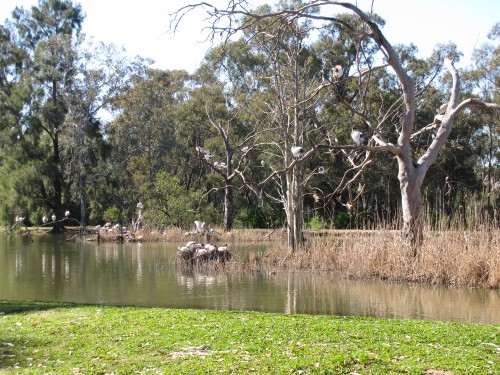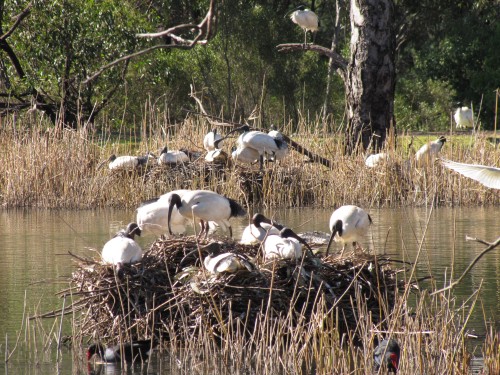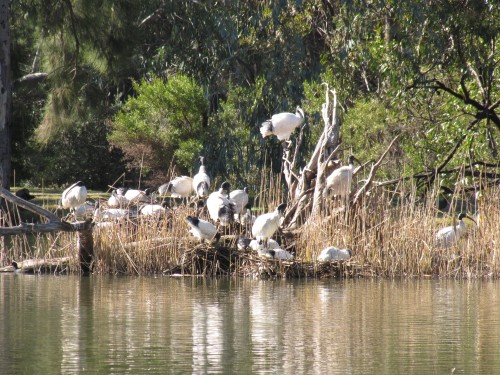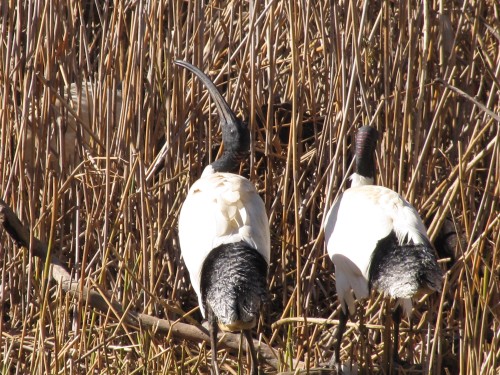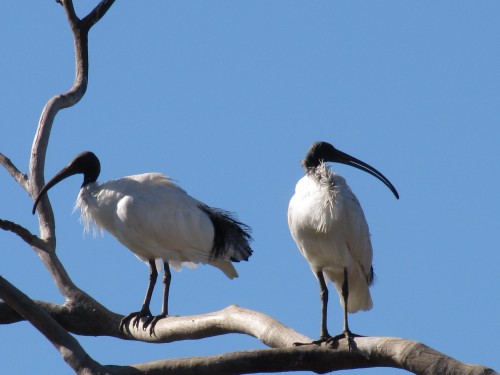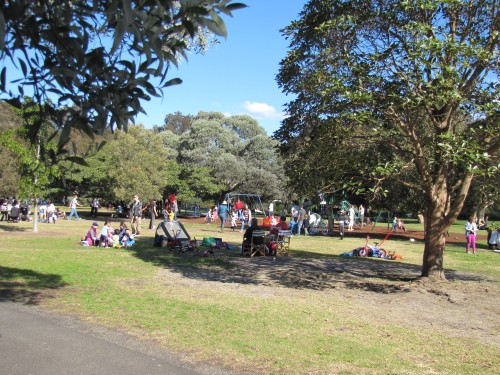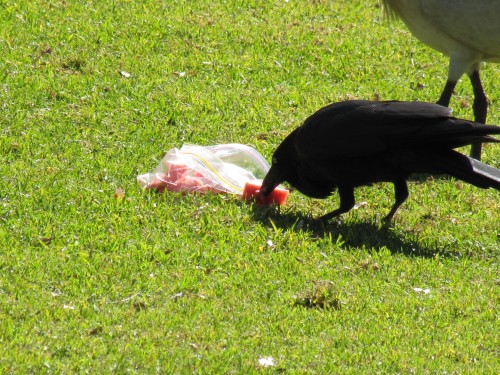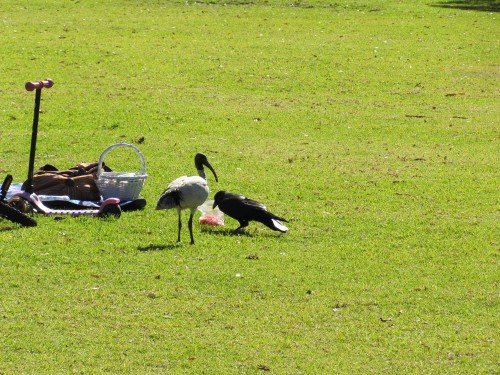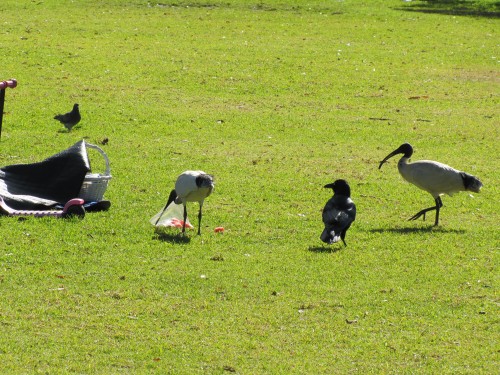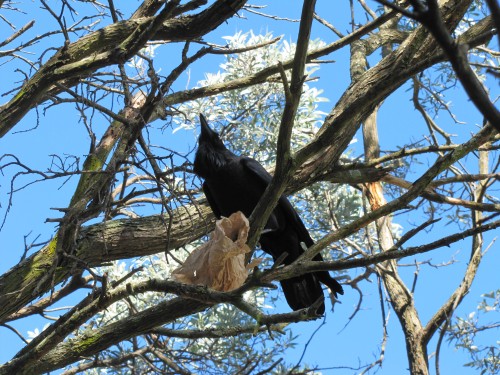White Ibis at Dubbo Zoo
Some time ago I wrote a few posts here on our visit last year to the Western Plains Zoo in Dubbo. This zoo is an open range zoo which complements the Taronga Park Zoo in Sydney. As we had never been to this zoo before we were looking forward to our visit over two days – tickets are valid for two days which I think is a great idea. One needs two days to see everything but we only had an afternoon and a part day due to a funeral of a family member. Our planned visit to this area fortuitously coincided with the family getting together.
For my readers who may not know much about this zoo, it was established many years ago by Taronga Zoo. It is situated a few kilometres south of the rural city of Dubbo which is on the western plains of New South Wales about a five hour drive from Sydney. The animal enclosures are quite large and visitors are able to drive their cars from one enclosure to the next. Going via bicycle is another popular method and these can be hired for the day, or you can bring your own. Some energetic people even walk from one enclosure to the next.
On our visit we stopped to have lunch by one of the lakes which have been built in the zoo property. This lake has become a well occupied wetlands area. My interest was mainly in the birds present, but I am sure that many other creatures inhabit this wetland. The most prominent bird present was the White Ibis. In today’s photos I have shown some of them on nests in the reeds as well as general shots of the colony.
Further reading: all are links to more articles and photos taken at the Western Plains Zoo
Clever crows and a bossy ibis
Earlier this year we spent just over 4 weeks visiting our son and his family in Sydney. Over recent weeks I’ve shared some of the birding experiences we had while there, and when we weren’t on grandparent duties. On the very last day we had a family picnic at Centennial Park (see photo above). Some of our son’s friends were also present and the weather was brilliant; bright sunshine and just a hint of a breeze.
Over the course of the afternoon I managed quite a nice list of the birds observed in the park, including a few flying overhead. The most prominent in-your-face species were the usual suspects: Noisy Miners, White Ibis and Common Mynas. We had to be on guard all the time and some of our friends’ biscuits were snatched from packets within a metre or two from where we sat.
One species I didn’t expect to join this thieving group was the local crows, or more precisely, Australian Ravens. Now I have known that crows and ravens are sneaky, opportunistic thieves since the days when I grew up on the family farm in the mallee districts of South Australia. The local Little Ravens thought nothing of snatching a few eggs from our laying hens and ducks. On this picnic, however, I saw them in a different light; they are very clever.
In the photo above I’ve captured an Australian Raven “red handed” in the act of stealing some food from someone’s picnic. The bird was clever enough to know what was food, how to get it out of the basket and even how to open the plastic bag to get at the food. I am not sure what the food is – perhaps some cut up watermelon.
Within a few seconds, the successful heist was noticed by several White Ibis patrolling the picnic area. In the photo above the raven was still in control of the stolen food, but the ibis was about to take over. They are the “bully boys” in this situation, one that is repeated in many picnic grounds throughout eastern Australia.
It wasn’t long before an ibis had taken over eating the human picnic food (see photo above). Within a very short time several other ibises joined in the feast. Even a Rock Dove (feral pigeon) comes over to see if it can get into the act (see above, top left corner of the photo).
The raven wasn’t to be outsmarted, however. It went to another picnic spot nearby, rummaged through the human food delicacies and came up with something edible in a paper bag. To minimise the chances of being noticed and being bullied out of its catch, it flew to a nearby tree. There it was successful in holding the paper bag against the branch, opening it up and getting at the food (see photos below).
Very clever.
Observe the feathers (called hackles) on the throat. This helps identify this bird as an Australian Raven.
Beware – the hazards of birding
I went for my morning walk before breakfast today. I generally follow the same route along a side road next to our property. The birding was quite good, despite the cool, overcast conditions. It was threatening to rain and I actually felt a few drops as I walked along.
Near the end of my route where I turn around and retrace my steps home I saw a dead Brown Snake on the road. It had been reasonably warm the day before, so I guessed that was when it came to grief. Although it’s not a busy road, large trucks come long it several times a day so it’s possible that one of them ran over it.
Although it is only a few weeks into spring, the snakes are on the move – and probably hungry after their winter hibernation. Brown Snakes are relatively common around here but they tend to keep out of our way by choice, so we only ever see one or two every year, usually dead specimens like the one I saw this morning.
The photo above is of an Inland Taipan (I think I read the label correctly) taken yesterday on our family visit to the Cleland Wildlife Park near Adelaide. The Brown Snake found around here is somewhat similar in appearance. Both are quite venomous so I treat any encounter with caution.
More than once I’ve almost stepped on a snake while birding, and on one infamous occasion actually had one slither over my boot. Now that’s observing our wildlife just a little too closely.
Just so my loyal readers are not disappointed, I’ve included a photo of some birds taken yesterday.
Some Ibis on High
Yesterday morning while having a cuppa out in my wife’s native plant nursery I observed a small flock of eleven Ibises flying high above us. The flock consisted of ten White Ibis and one Straw-Necked Ibis. I have frequently observed flocks of several hundreds of Ibises flying over or near the river here in Murray Bridge but we rarely get them flying over our place.
Most of the time they are Straw-Necked Ibis but occasionally there will be a few White Ibis fly over. The Straw-Necked seem to be the more common of the two species here in this part of Australia, in my experience anyway.
I haven’t any really good photos of either species yet which is a little surprising as they are very approachable and can be quite tame. In fact in some of the eastern states of Australia they are a pest species in parks and gardens. They will aggressively approach picnickers and steal food, a somewhat frightening experience for small children. (Some of our bird species can develop aggressive tendencies. For more comments click here.)
The above photo is the best I currently have. It is a special one because it was taken some time ago and is a record of the very first Straw Necked Ibis that we observed to land on our five acre block of land in over twenty years.
Updated Nov 2013.
